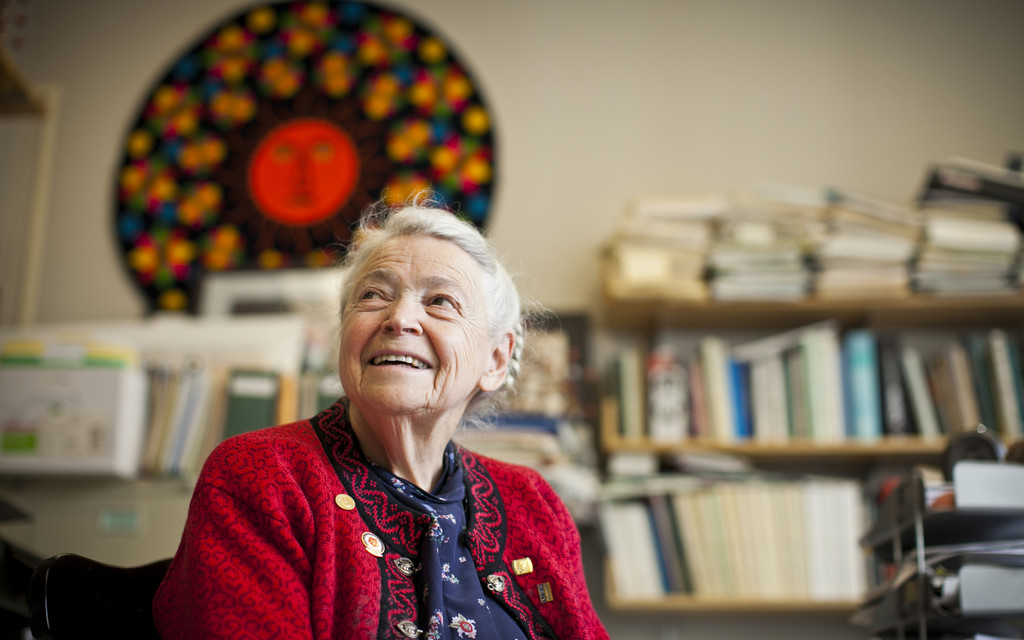Dr. Mildred S. Dresselhaus, of Lincoln Laboratory, who has achieved prominence as a solid-state
physicist has been appointed Abby Rockefeller Mauzé Visiting Professor at the Massachusetts
Institute of Technology, read a small news item in the Boston Globe on 8 October, 1967. The
appointment was for a single year, but it was still significant because it was the first time MIT’s
Electrical Engineering department had hired a female professor. Before that year was out, the
department would offer Dresselhaus a full professorship with tenure.
In Carbon Queen, the first full-length biography of the history-making scientist, science writer
Maia Weinstock traces Dresselhaus’s exceptional career, which included foundational research on
various forms of carbon that has enabled other scientists and engineers to make tremendous advances
with nanoscale structures “on the order of one-hundred-thousandth the width of a human hair.” Such
materials—which include cylindrical nanotubes, iconic buckyballs, and two-dimensional
graphene—have applications in energy storage, medical research, and quantum computers.
It all began with graphite— the familiar “lead” of pencils, which is neither a metal, nor a
semiconductor but, nevertheless, conducts electricity. Dresselhaus’s investigations into the electronic
structure of graphite contradicted the theorized energy level spacing within the material’s valence
and conduction bands and led to a standout publication in 1968, her first year at MIT (1). In her six-
decade-long career, she would publish approximately 1,700 peer-reviewed articles as well as eight
books on the fundamental properties of carbon, earning her the moniker “Queen of Carbon,” a title
she apparently hated at first but later embraced.
Weinstock writes evocatively of Dresselhaus’s improbable journey from a tough neighborhood in
New York City in the 1940s to a world-renowned research institution. In the Depression era, we
learn, her family struggled to make ends meet. Fortunately, the musically talented “Millie”—as she
was widely known— won free lessons at the Greenwich House Music School. There, she learned of
a nearby magnet school for girls, where, after passing the difficult entrance examination, she excelled
in mathematics and science. Later, at Hunter College, Dresselhaus was preparing to become a math
teacher until Rosalyn Yalow, who would go on to win the Nobel Prize in Physiology or Medicine in
1977 and briefly taught nuclear physics at Hunter, insisted that her protégé apply to graduate school.
At the University of Chicago, where Millie completed her graduate studies, she briefly enjoyed the
informal mentorship of Nobelist Enrico Fermi; she met, and married postdoc Gene Dresselhaus, a
rising star in theoretical physics. Gene would become his wife’s lifelong cheerleader and collaborator
(he introduced her to graphite), and together they raised four children. He reveled in his wife’s
achievements, which occluded his own, but Millie regretted the fact that she got far more credit than her
husband for work they had done together, notes Weinstock.
Keenly aware that a philanthropic grant made it possible for her to enter academia, Dresselhaus
used her prominence to further the same vision. Not content with being a distant role model, she
regularly met with young women on campus and sought to increase their numbers in technical
courses. Her research into the undergraduate admissions process revealed that “it was harder for
women to get into MIT than for men” and she made useful recommendations to level the playing
field for women in science at MIT and elsewhere.
In Carbon Queen, Weinstock has pieced together Dresselhaus’s life story using decades of
profiles, print interviews, oral histories conducted with the scientist herself, and new interviews with
her contemporaries. Using lively metaphors, she makes complex scientific concepts accessible,
comparing, for instance, the band gap— which determines whether a material can conduct
electricity, or not— to a bouncer at a popular night club.
Readers are also left with vivid images of the woman herself. As a child on her way to music school; as a high-spirited teen, sneaking friends into the Hayden Planetarium; and finally, as a trailblazing scientist who gave the academy hell for their dismal track records with women, politely but effectively.
html. pdf
